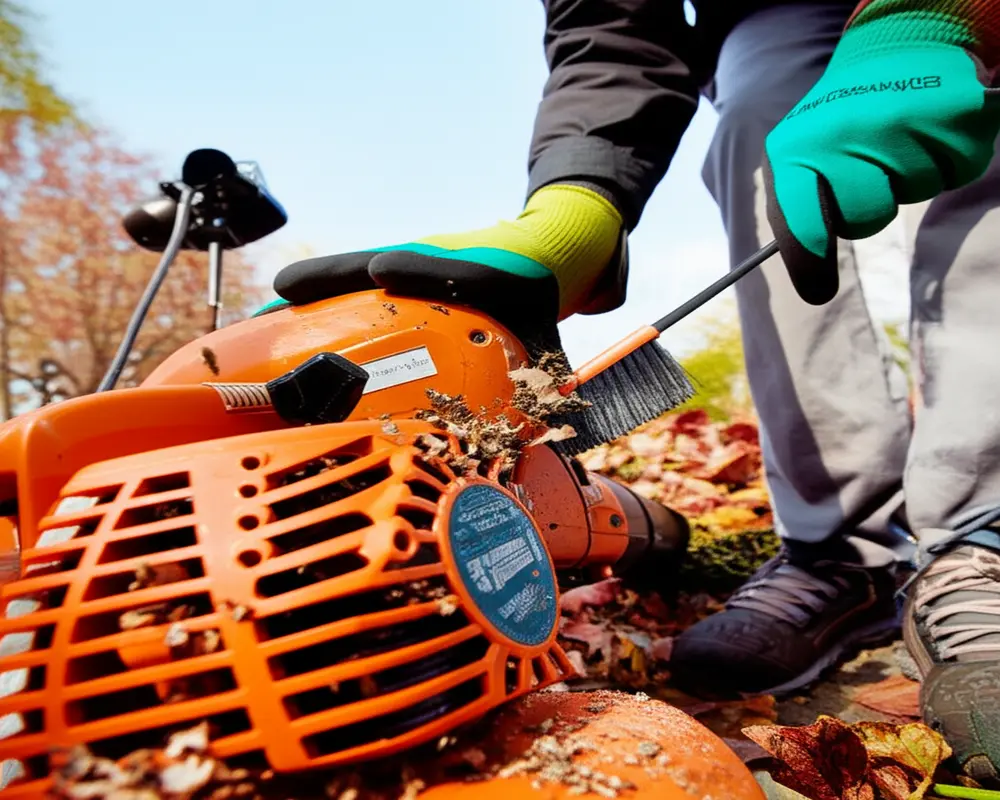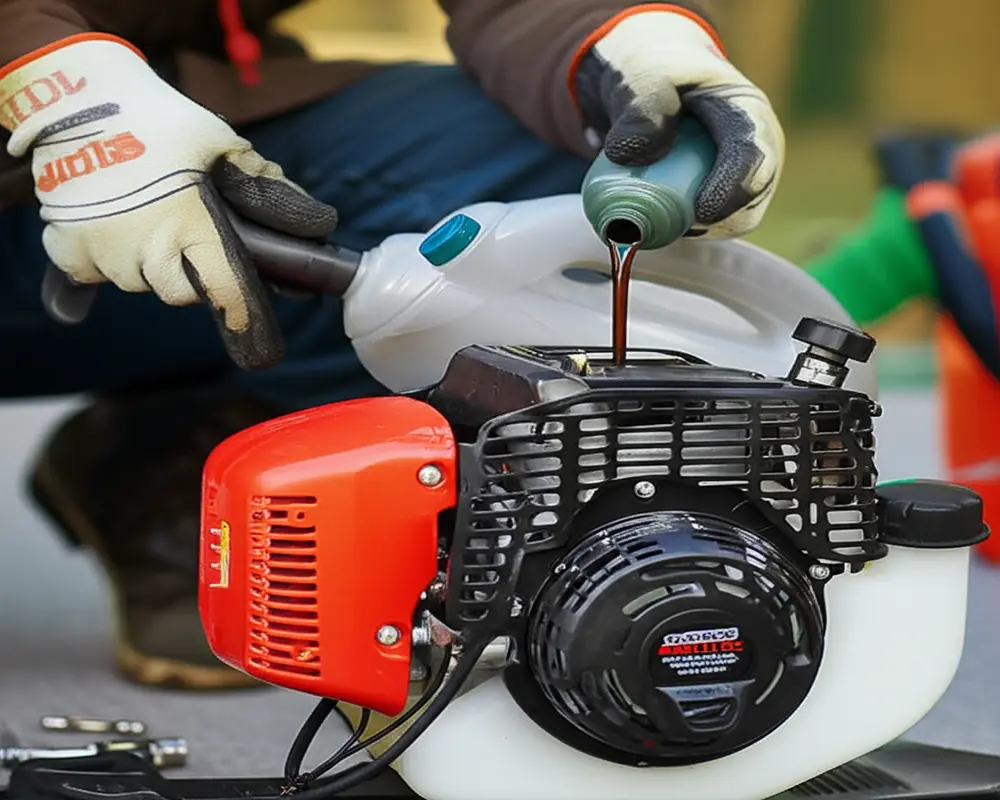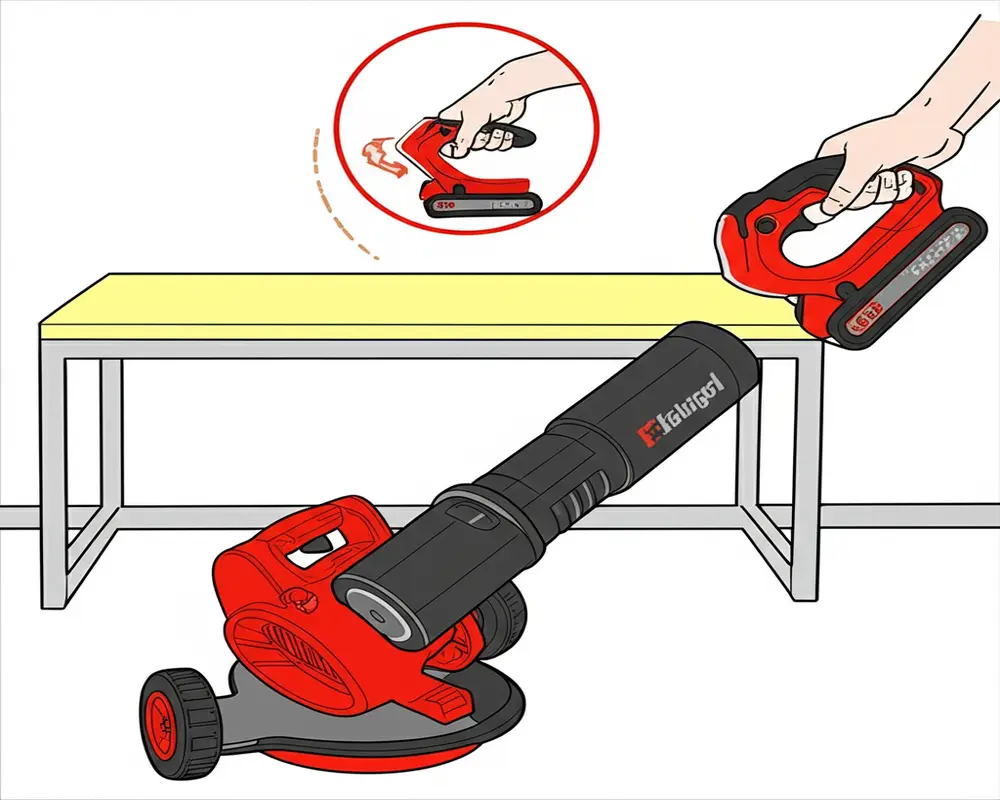Leaf Blower Winter Storage: How to Properly Winterize Your Equipment
Leaf blower winter storage is an essential practice for anyone looking to preserve the longevity and performance of their equipment through the colder months. Whether you own a gas, electric, or battery-powered leaf blower, understanding the correct winterizing process ensures your tool remains reliable and ready for use come spring.
I. Introduction: Why Winterize Your Leaf Blower?
Proper storage of your leaf blower during winter months significantly extends the lifespan and maintains the reliability of your equipment. Neglecting winter storage can lead to fuel degradation in gas models, battery damage in cordless units, and rust or corrosion in all types, resulting in costly repairs and poor performance when you need the equipment again.
This comprehensive guide covers the winterizing methods applicable to all major leaf blower types: gas-powered, electric corded, and battery-powered models, helping you protect your investment and ensure optimal functionality in the spring.
II. Essential Tools & Materials for Winterizing
Before beginning the winterization process, gather the necessary tools and materials to prepare your leaf blower effectively:
- General cleaning supplies: soft brushes, rags, mild detergents, and compressed air for thorough cleaning.
- Gas leaf blower items: fuel stabilizer, spark plug wrench, engine oil (preferably synthetic), and replacement air filters.
- Battery leaf blower items: battery charger and protective storage cases or containers.
- Optional: equipment covers and desiccants to reduce moisture exposure during storage.
III. Pre-Storage General Steps for All Types
All leaf blowers, regardless of power source, should undergo some general preparatory steps before storage. These steps ensure safety and prevent damage due to debris or moisture.
Safety first: Disconnect power sources as appropriate — unplug electric models and remove batteries from cordless units.
Clean the exterior thoroughly: Remove dirt, leaves, and other debris clinging to the blower housing and vents. Use a soft brush or cloth and compressed air to clean hard-to-reach areas. This helps prevent rust and blockages during storage.

Inspect for wear and tear: Check fasteners, power cords, tubes, and any moving parts for signs of damage or wear. Address any issues before storing to avoid complications in spring.
IV. Winterizing Gas-Powered Leaf Blowers
Gas leaf blowers require particular attention due to the nature of their fuel system and engine components.
Fuel system management: For short-term storage (a few weeks to a couple of months), add a fuel stabilizer to the gas tank and run the engine briefly to circulate the stabilizer through the system. This prevents fuel degradation and varnish buildup. For long-term storage (several months or more), it is best to drain the fuel completely to avoid gum deposits in the carburetor and fuel lines.
Engine maintenance: Replace or clean spark plugs to ensure easy starts come spring. Clean or replace air filters to maintain proper airflow and engine efficiency. For 4-stroke models, change the engine oil to remove contaminants that can corrode engine parts during storage.

Additional checks: Clean the exhaust and spark arrestor to prevent buildup that could interfere with engine function. Lubricate throttle cables and other moving parts to protect against rust and stiffness.
Following winterizing tips from reputable sources like Equipment World can give you deeper insights into maintaining gas-powered tools.
V. Winterizing Electric Corded Leaf Blowers
Taking care of electric corded leaf blowers during winter storage is simpler but equally important.
Inspect the power cord for any visible damage, cracks, or frays. Damaged cords should be repaired or replaced to avoid electrical hazards. Use compressed air to clean motor vents thoroughly, ensuring dust and debris do not block ventilation.
Test switches and triggers for smooth operation and responsiveness. Detach any nozzles or attachments, clean them, and store them separately in a dry place.
VI. Winterizing Battery-Powered Leaf Blowers
Battery care is critical to preserving the performance and lifespan of cordless leaf blowers.
Battery care: Charge the battery to about 40-60% before storage — this state of charge is optimal to prevent capacity loss or cell damage. Remove the battery from the blower unit and store it in a cool, dry environment away from extreme temperatures.

Unit care: Clean battery terminals and ensure the blower unit itself is dry and free of dirt or debris. This prevents corrosion and keeps electrical contacts in good condition.
For detailed battery storage best practices, Battery University offers expert advice on handling lithium-ion batteries safely.
VII. Storage Location & Conditions
Choosing the right storage environment is crucial to protect your leaf blower during winter.
Select a cool, dry, and temperature-stable location such as a garage, shed, or basement. Avoid places prone to moisture buildup or temperature fluctuations that can cause condensation or freezing.
Cover your leaf blower with a breathable equipment cover to shield it from dust and dirt. Using desiccants inside the storage area helps absorb moisture, further preventing rust and corrosion. If possible, store the blower off the ground on a shelf or pallet to reduce exposure to dampness.
VIII. Common Storage Mistakes to Avoid
Many gardeners make avoidable errors when storing their leaf blowers for winter. Here are some pitfalls to watch out for:
- Leaving untreated fuel in gas models, which can degrade and gum up the engine.
- Storing batteries at full charge or completely drained, both of which harm battery health.
- Placing tools in damp or poorly ventilated areas.
- Skipping thorough cleaning, which invites rust and mechanical issues.
- Failing to disconnect power sources, risking electrical shorts or damage.
- Ignoring manufacturer instructions, which often provide model-specific guidance.
IX. FAQs
Can fuel be left in over winter?
For short-term storage, fuel can be treated with a stabilizer and left in the tank. For longer periods, draining fuel is advisable to prevent degradation and carburetor issues.
How cold can the blower be stored?
Leaf blowers should ideally be stored above freezing temperatures. Extreme cold can damage batteries and engine components.
Should battery be removed?
Yes, always remove the battery from cordless leaf blowers and store it separately in a controlled environment.
How often to check during winter?
Check stored equipment every few weeks to ensure conditions remain dry and batteries retain charge.
Troubleshooting won't start post winter?
Common issues include stale fuel, clogged filters, or dead batteries. Cleaning, refueling with fresh gas, and charging batteries typically resolve these problems.
Does winterizing void warranty?
No, proper winterizing following manufacturer guidelines protects your warranty by maintaining the equipment in good condition.
X. Preparing for Spring Use
When spring arrives, prepare your leaf blower for use by reversing the winterization steps carefully.
For gas models, add fresh fuel, check the oil level, and reconnect the spark plug. For battery models, fully charge the battery before use. Conduct a visual inspection for any new damage or wear and perform a test run to ensure everything operates smoothly.
XI. Conclusion
Proper leaf blower winter storage benefits your equipment by extending its lifespan, reducing repair costs, and ensuring it performs at its best when you need it. By following these detailed winterizing steps and avoiding common mistakes, you invest in preventive care that pays dividends in reliability and convenience. Come spring, your leaf blower will be ready to tackle yard cleanup efficiently, helping you maintain a beautiful garden year-round.
For more insights on garden tool maintenance and seasonal care, consider exploring related topics such as the digging spade technique which complements efficient garden upkeep.
External resources referenced include:

